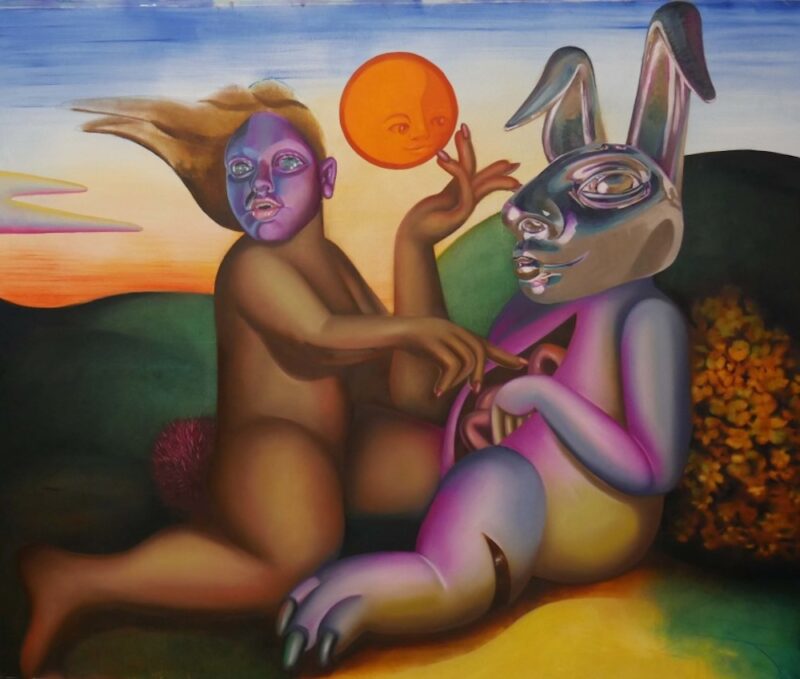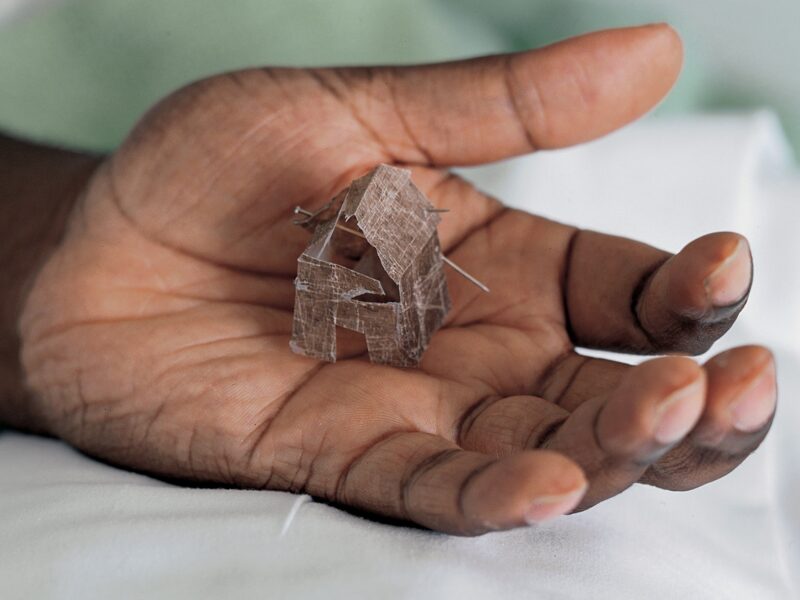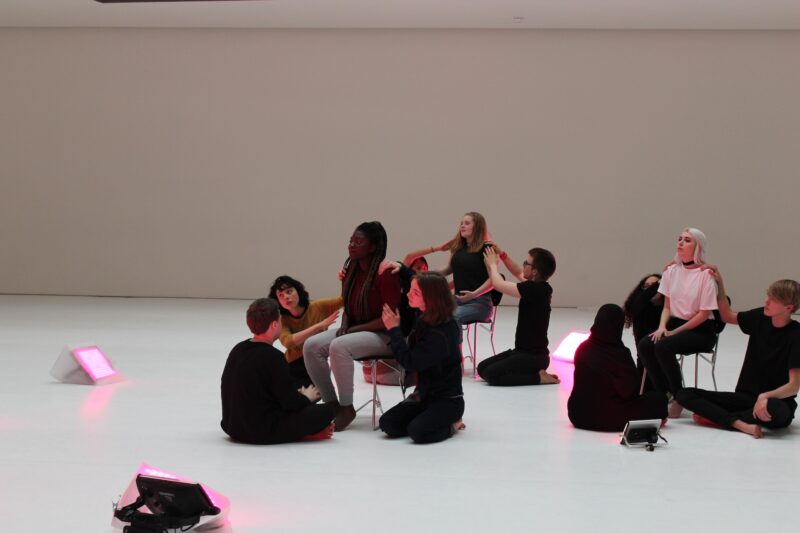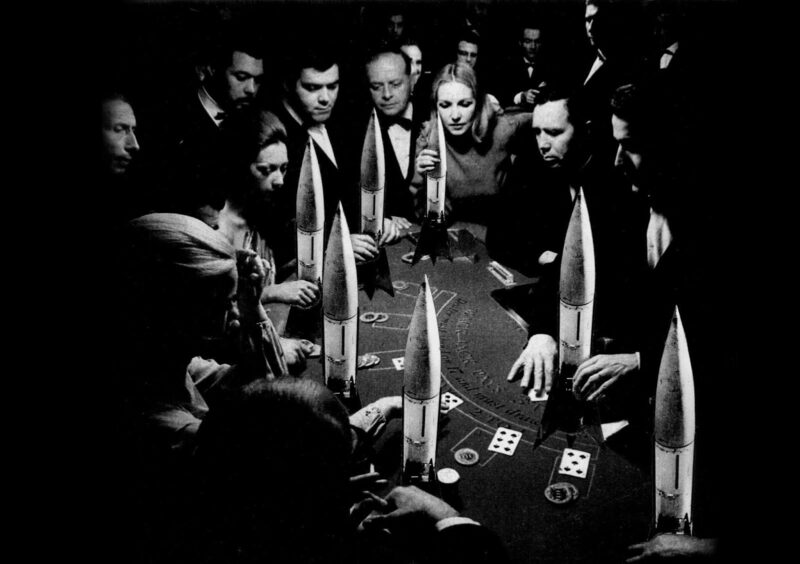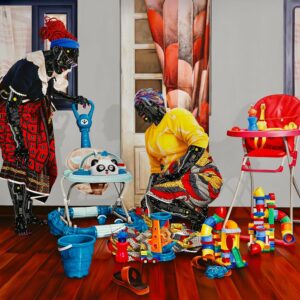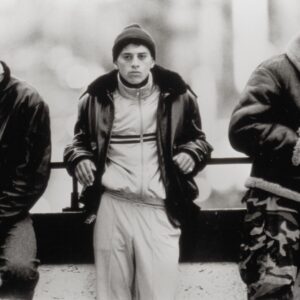The London Open is the Whitechapel Gallery’s triennial exhibition. It features 35 artists selected from over 1,800 that submitted works The only application requirement is that you have to be aged 26 or over, living and working in London.
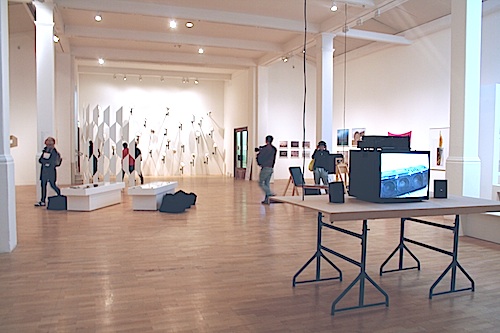
It is the 80th anniversary of an exhibition that started at the East End Academy ‘for all artists living or working East of the famous Aldgate Pump.’ After the exhibition progressed to be known instead as the ‘Whitechapel Open’ it helped launch the early careers of some of today’s most important living artists including Grayson Perry, Anthony Gormley, Anish Kappor, Julian Opie and Richard Wentworth – groundbreaking artists who represent British art at its most conceptual, eccentric and diverse.
This year’s show brings us hope that there are still rising-stars creating interesting and unique works in the Capital. If we are unable to bask in the glory of the Euros, Wimbledon and the Olympics this is something we really have the right to celebrate. The exhibition reveals these artists as active in the society that surrounds them and it is this engagement with political and social concerns that ties all the work together.
Martin John Callanan’s two conceptual works on display; ‘International Directory of Fictitious Telephone Numbers’ (2011) and ‘Letters 2004-2006: Confirmation that you still exist; I respect your authority; When will it end’ (2007) immediately confront the visitor with a combination of irritating discordant sound and obsessional visual conformity. The 24 letters on display are selected responses from Callanan’s mass letter writing. He wrote to powerful institutions and people posing simple rhetorical questions that stimulated replies that revealed the absurdity of power. At first his anarchist approach provoked attempts at a rational response but usually after a short period of exchanges Callanan started to receive only formulaic letters of the kind we have come annoyingly accustomed to. The public’s frustration at our ‘computer-says-no-society’ is further reinforced by a telephone displayed in front of this piece. The telephone automatically rings numbers in a phonebook that includes only disused telephone numbers (the type that would be used in film and TV). All the calls are cut-off causing a loud dead tone sound that resonates across the entire ground floor of the Whitechapel Gallery.
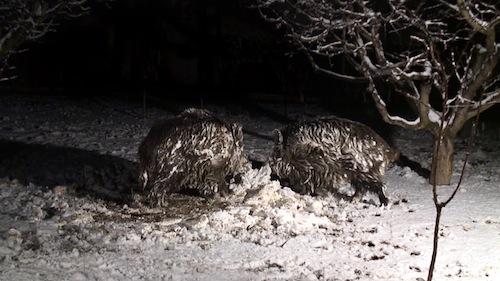
Greta Alfaro In Praise of the Beast 2009 HDV, colour, sound, 16:9 14 min 58 sec Courtesy the artist
Other societal tensions can be seen in the work of Greta Alfaro whose video piece ‘In Praise of the Beast’ (2009) features two wild boars finding and demolishing a large cake they come across in the wilderness. At first they seem vulnerable as they approach the strange object, but then they proceed to draw circles around it, then destroy it, and finally play with it. The piece reveals how we deal with feelings of unease and fear in a society obsessed with control and security. The colourful and abundant character of the cake contrasts with the dark and wild nature of the forest and the boars. A cake usually represents celebration and therefore brings up connotations of anxiety when we watch it being devoured by the unknown.
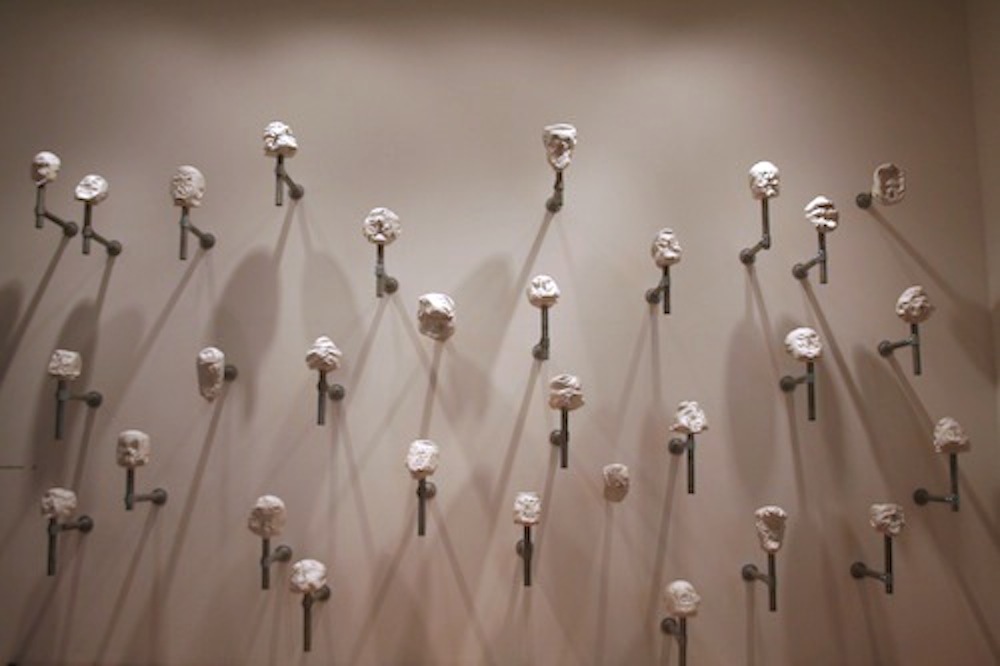
Leigh Clarke the Heads of State installation 2012 Plaster, steel, industrial paint Size variable Courtesy the artist
Leigh Clark’s wall of masks entitled ‘Heads of State’ (2012) features negative casts of notorious political figures displayed on metal sticks. This seems to represent or reveal a section of society’s feelings towards people in power. Referencing Ancient Greek statues, that had their noses chopped off when they had disgraced their people, this installation hangs contemporary figures in a similar and effective way. The process of collecting these commercially-produced masks, some rare and others discontinued, was a feat in itself. Creating the casts destroyed the masks. Society used these masks to satirise these holders of power, but with their masks removed these formally powerful figures leave only an ugly and distorted solidity.
TORY TURK FOR FAD
